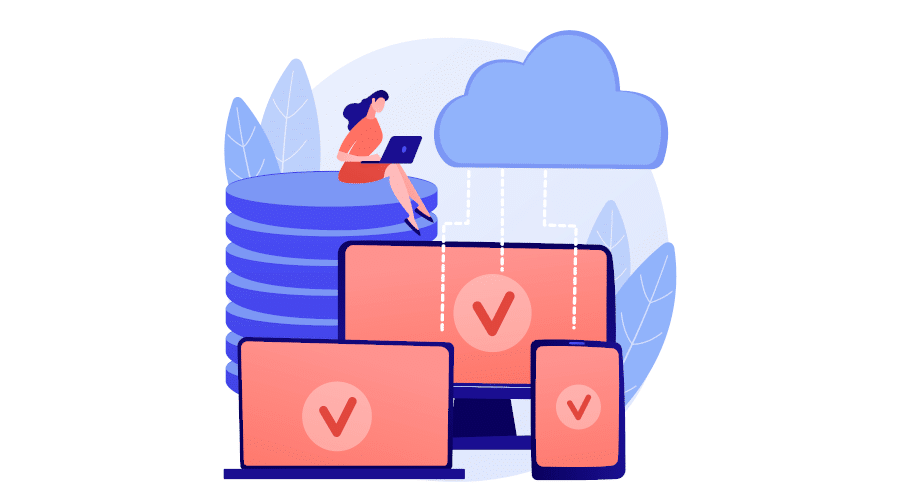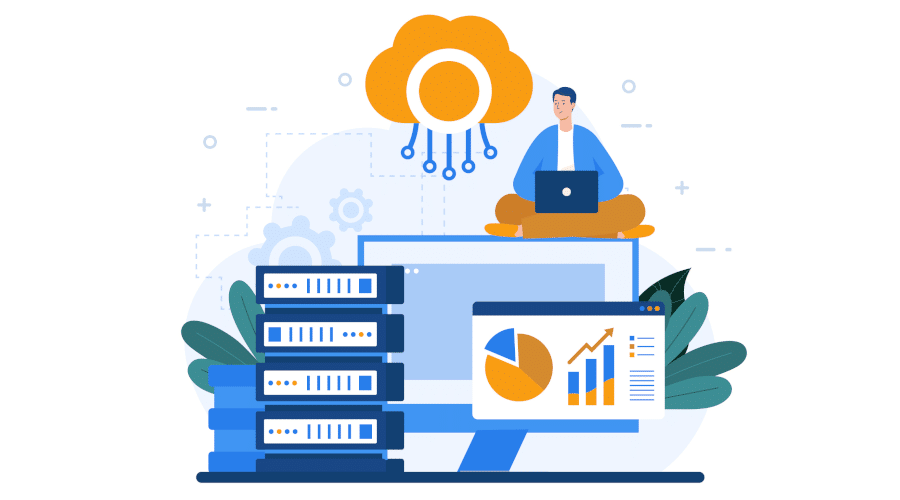While the move to the cloud enables businesses to become more flexible and efficient, it also presents a number of challenges. Not only in terms of the technology stack used, but also in terms of the employees directly or indirectly involved, and more generally for all the organisation's processes. This is precisely why Google Cloud Platform offers its adoption framework. So what is it all about? What are the main principles of the GCP CAF? That's what we're going to look at in this article.
What is GCP CAF?
GCP CAF is Google’s adoption framework. The aim is to help businesses adopt best practices for migrating their data to the cloud. These best practices concern technological tools, employees and processes.
For this framework, Google is essentially drawing on its experience. Indeed, the web giant was one of the first to operate entirely in the cloud. But it hasn’t always been easy. The company has also had to deal with problems of leadership, staff management, operational methodologies, software incompatibility, security, etc.
Not to mention the fact that Google has also helped other companies migrate their data to cloud services. So it is on the basis of all the lessons learned over the years that the web giant is offering its own cloud adoption framework.
How does the GCP adoption framework work?
To successfully migrate to Google Cloud, businesses need to start by taking stock of their situation. Firstly, they need to identify their objectives and the resources they need to achieve them. Secondly, they need to assess their level of cloud maturity. This is precisely why the GCP CAF has defined 4 themes and 3 phases.

The 4 main themes of the GCP CAF
The digital transformation of companies towards the cloud involves mastering the 4 areas below:
1. Lead
The success of a cloud migration project depends first and foremost on its employees, particularly the IT teams. Communication must be fluid between the various departments to encourage collaboration and motivation.
And while IT departments play a vital role in the development of this new organisation, so does management. Management must support the project by allocating the right budget for its successful implementation.
At this stage, a number of questions arise:
- How are the teams structured?
- Are they cross-functional?
- How involved is management?
- How are cloud projects budgeted, managed and evaluated?
2. Learning
More specifically, this area of the GCP CAF involves continuous learning. But in order to learn continuously, companies need to make a major effort to develop the skills of their employees (particularly, but not only, in the IT department).
Above all, they need to encourage the sharing of knowledge both internally and externally (particularly with partners or expert service providers).
To master this area, organisations need to ask themselves a number of key questions:
- Who is involved?
- To what extent?
- How effective are the results?
3. Scalability
One of the undeniable advantages of the cloud is its ability to scale. In other words, the ability to scale workloads quickly, without increasing costs. To achieve this, businesses need to use cloud-native services that can reduce operational overheads and automate manual processes and policies.
Here are the questions to ask:
- How do services scale in the cloud
- How are workloads allocated?
- How are updates managed?
4. Security
More than ever, businesses need to strengthen the security of their data and services in the cloud. To do this, they can make use of various Google Cloud Platform features, such as unauthorised access and identity-based multi-layer security models.
To find out how well you control security in the cloud, you can ask yourself the following questions:
- What controls are in place?
- What data do you need to protect
- What technologies are used?
- What cloud strategy is being applied?
The maturity of organisations in terms of security very often depends on the 3 other themes of the GCP CAF.

What are the 3 main stages?
According to the GCP CAF, there are 3 levels of maturity for businesses when it comes to moving to the cloud.
a. Tactic
This is the first stage where only individual workloads are in place. However, there is no plan or strategy encompassing all the tasks that need to be carried out to ensure the success of the project.
At this stage, organisations are primarily focused on cost reduction and migration with minimum possible disruption. In other words, it’s mainly a short-term strategy with the prospect of quick wins.
b. Strategy
Companies have a broader vision, taking into account future needs and how they will evolve. The strategic phase often comes after some initial changes involving IT teams and their processes.
Already, companies can see a rationalisation of operations and an improvement in overall performance thanks to the exploitation of the cloud. This in turn increases the value delivered by IT services.
c. Transformation
The final phase of the CAF GCP comes once all the operations in the cloud are working properly. At this stage, the company can migrate all its data and knowledge to the cloud.
Above all, it can develop new uses, such as transparent data sharing, predictive analysis to improve decision-making, machine learning and so on. Here, it’s the long-term vision that counts, making data one of the organisation’s key drivers of innovation (and no longer a cost centre).
Each of these phases fits into the different themes of the GCP CAF.
And if you want to reach the final level of maturity, it’s best to train yourself in cloud best practice. Datascientest can help you do just that. Find out more about our training courses.
Key facts:
- GCP CAF is Google Cloud’s adoption framework designed to provide businesses with best practices for migrating to the cloud.
- This cloud adoption framework is based first and foremost on mastery of 3 major themes: lead, learning, scalability and security.
- For these different phases, the CAF defines several levels of maturity of varying lengths. These are: tactics, strategy and transformation.











